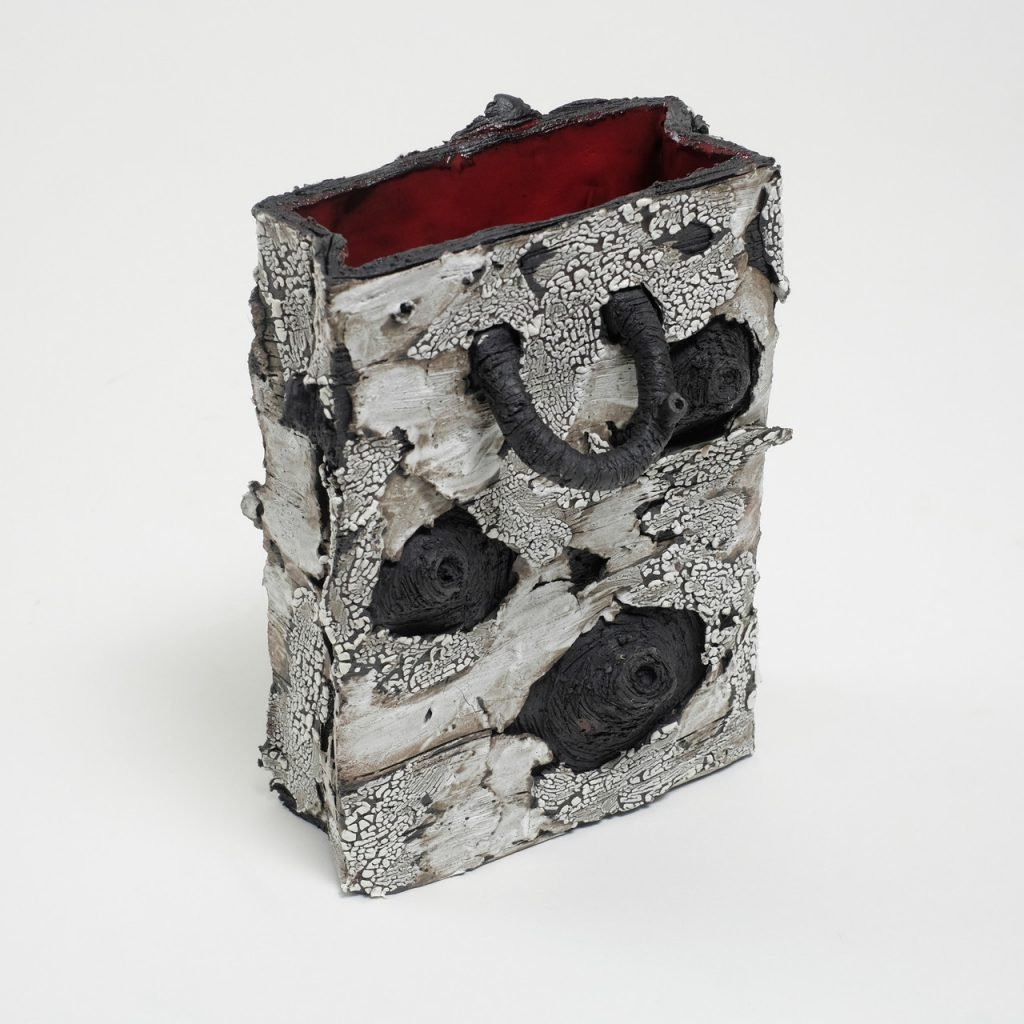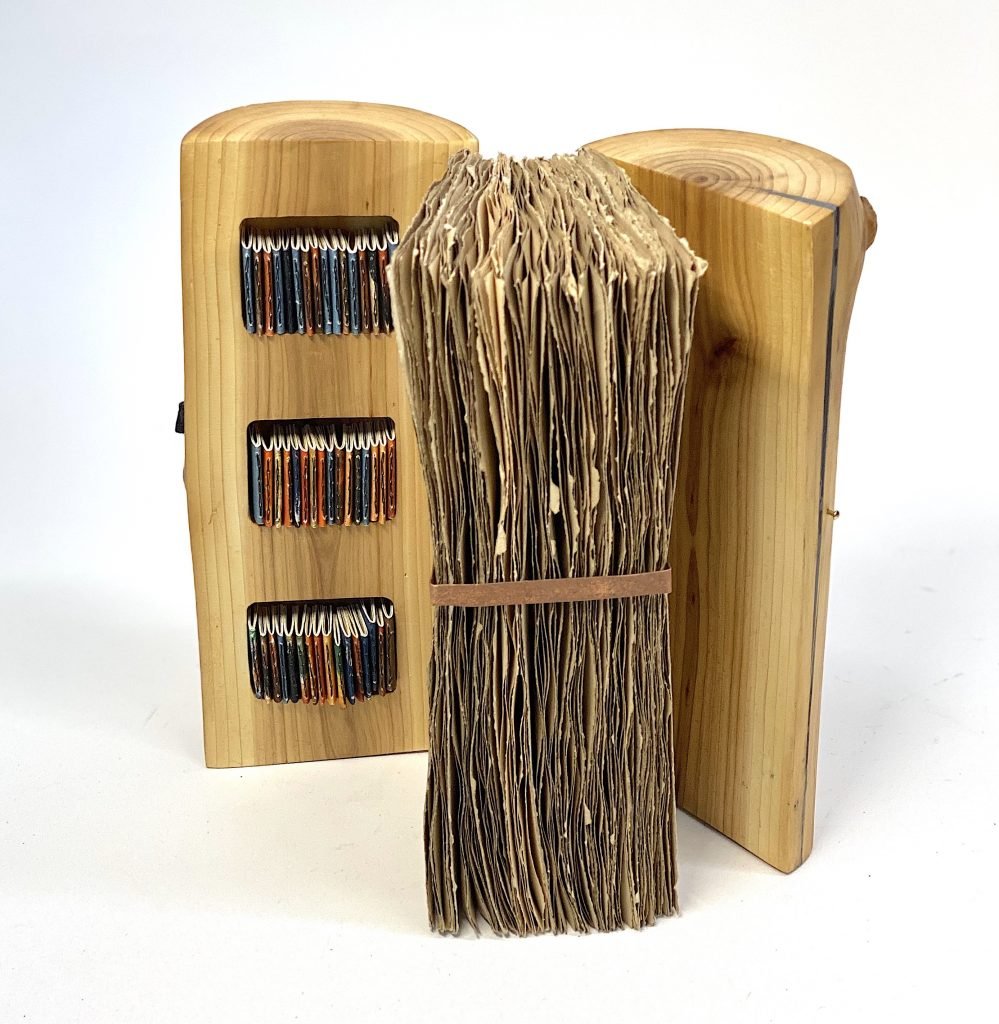Quiet Places combines the processes of three artists in a collaborative exhibit, merging each artist’s medium, inspiration and techniques. Learn more about each artist’s approach, their craft and how each converges in this show, on view at the CCBC Gallery until September 29, 2022.
Just as trees work within communities offering mutual support and communication, connecting their roots for thousands of miles, three artists came together to create the exhibit Quiet Places. For their collaborative artwork, Bev Ellis, Debra Frances and Sue Gordon created a series of sculptural books around themes of forest calm and solitude. In this endeavour they developed links between ceramic sculpture, encaustic painting, printmaking, bookbinding and book art. As well as this work, each artist has created individual art pieces for the exhibit.
the artists’ processes
Bev has been working with clay for over 25 years. Her skills in drawing, painting and printmaking inform the detailed surfaces of her sculptures. For Bev, spending time in nature is where she finds inspiration, and sculpting an opportunity to explore life’s intricate complexities. Different clays are chosen for each sculpture base on their properties, they are slab built, and layered with textures. In this meditative process, each piece is hand carved utilizing the different stages of drying to incise marks. The pieces are painted with glazes and underglazes, and fired in oxidation. In this particular exhibit, Bev utilized techniques and materials to invite viewers into the wonder she experiences in nature.


Debra’s work is informed by a sense of place and a response to her environment. Having spent a great deal of her life exploring the wilderness of Manitoba and Northwest Ontario, this has become key inspiration for her bookmaking. Making work from found material connects her to her surroundings and is an important way that she’s learned to process experiences and foster a sense of relationship with / belonging to the land. Transforming foraged objects into books signifies both the value of that object and, in the gesture of a functional form – its’ unfinished history. Her work in the exhibition will include a variety of log books, some with hidden libraries, some with Sue’s encaustic paintings recessed into wooden ‘pages’, some with Bev’s sculpted covers.
Sue’s encaustic paintings evolve very slowly, and are the result of physical negotiations. She spends as much time building up layers of wax and pigment as she does to scrape them away. In some cases, she builds an entire landscape only to excavate it with traces of the original composition remaining in the final piece. Generally, the encaustic paintings are a response to her love of the materials, the allure of the process, physicality of painting, and the enticement of not really knowing the final result.

Though creating individually in their own studios, the artist’s collaborative works have travelled from one studio and province to another. For example, the journey of the collaborative piece “Awake”, began in BC with Bev creating realistic sculptural ceramic book covers that emulate the rich textured bark of a birch tree. When completed, they were sent to Debra in Manitoba. Upon receiving the covers Debra began thoughtfully making a template for the pages. When Sue received this template, (Also in Manitoba), she began using her encaustic painting techniques to bring life to each page. The pages were then sent back to Debra who began the process of bringing each element together. By sewing strong handmade flax paper onto the spine of the individual art filled pages, Debra was able to protect each one while also adding the strength needed to support the sculpted covers. Debra used the ancient Coptic method of binding to assemble the collective work. Now fully formed, “Awake” will journey back to BC for the exhibition “Quiet Places” at Craft council BC opening August 11th.
While their processes are distinct from one another, Bev, Debra and Sue’s collective artwork in ‘Quiet Places’ forms a unique presence that celebrates the peaceful solace and strength found in the natural world.

